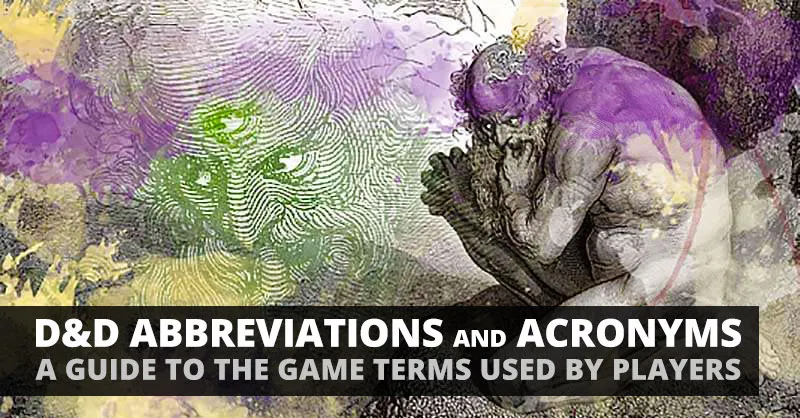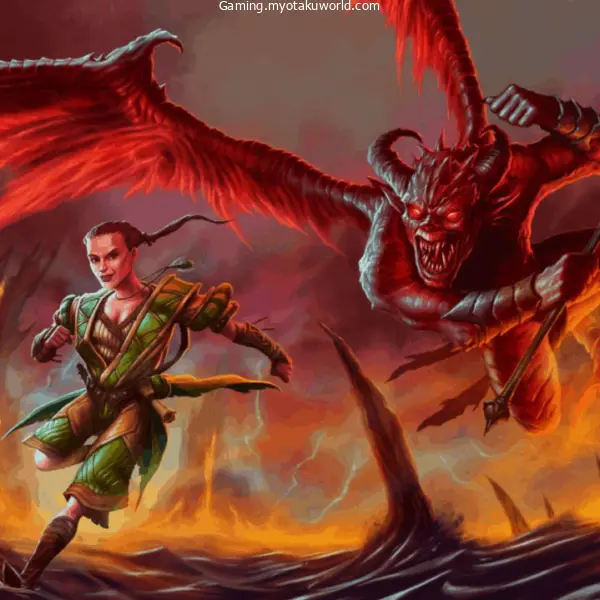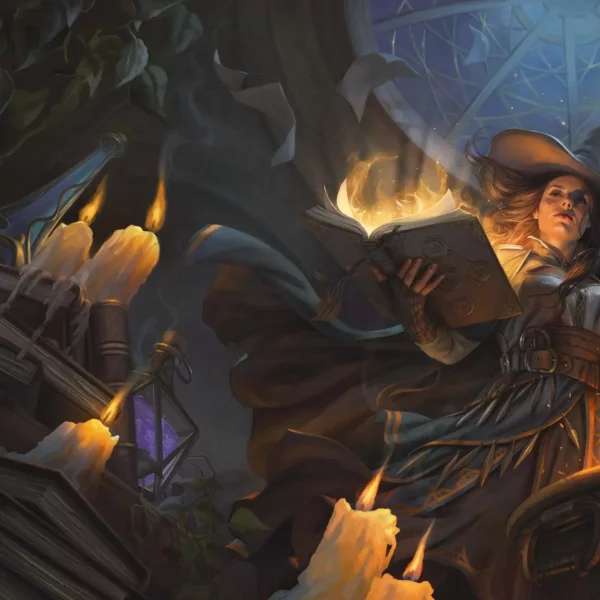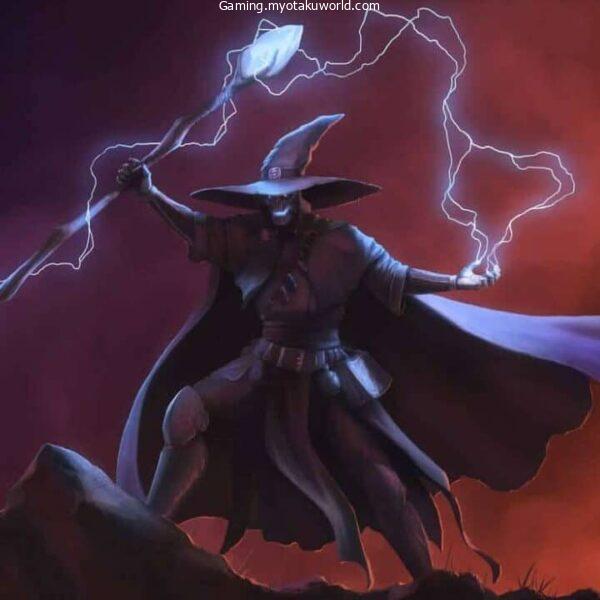D&D can be a lot of fun, but it can also be intimidating for new players. It can be tough to understand all the jargon and slang that experienced players use.
This list aims to help new players get a handle on some common terms and Abbreviations that they might encounter at the gaming table.
1e (or AD&D), 2e, 3e, 3.5e, Pathfinder, 4e, and 5e: These are the different editions of D&D. Over the years, the game has been updated and revised to reflect changing preferences.
1e is often referred to as Advanced edition, because it was the first major departure from the system that spawned D&D (called Chainmail).
AC: Armor Class. This is a measure of how hard it is to hit a character or monster.
AOE: Area of Effect. In D&D, there are two types of spells: those that affect a specific character (called Direct Spells) and those that affect an area. Anything within this area is affected by the spell.
ASI: Ability Score Increase. At levels 4, 8, 12, 16, and 19, you can increase your ability scores (STR, DEX, CON, INT, WIS, CHA) by +2. This can be applied to one score (for a total increase of +2) or to two different scores (for an increase of +1 each).
Ability Score Abbreviations: Here are the common abbreviations for your base stats:
- STR: Strength (physical strength)
- DEX: Dexterity (agility and quickness)
- CON: Constitution (endurance and toughness)
- INT: Intelligence (book smarts, including knowledge of history and magic)
- WIS: Wisdom (common sense and survival skills)
- CHA: Charisma (ability to persuade and charm others)
BBEG: Big Bad Evil Guy/Gal. This is a humorous acronym for the final boss of a campaign. It’s often used because the boss is one-dimensional and evil.
For example, “Watch out, the BBEG is using his action to kick that puppy!”
Coins: There are different abbreviations for coins in D&D, listed here in descending value and marked in relation to gold pieces:
- PP (10 GP): Platinum Pieces, the most valuable
- GP (1 GP): Gold Pieces, the universal standard and most commonly used currency
- EP (1/2 GP): Electrum Pieces, an impure mixture of gold and silver, relatively uncommon
- SP (1/10 GP): Silver Pieces, usually used for small purchases or paying for rooms at inns
- CP (1/100 GP): Copper Pieces, the least valuable coin
CR: Challenge Rating. This is a measure of the difficulty level of a monster. It can also refer to Critical Role, a popular D&D campaign that is livestreamed every Thursday.
DC: Difficulty Class. This describes how difficult it is to pass a check.
Dice (ex: 1d6): The first number (in this case 1) indicates the number of dice you should roll, and the dX indicates the number of sides the dice should have (X in this case is 6). So, 6d12 means you need to roll six twelve-sided dice. The most common variants are d4, d6, d8, d10, d12, and d20. All of these are included in a standard set of tabletop dice.
DM: Dungeon Master. This is the player who creates the world and controls the Non-Player Characters (NPCs) during the game.
DMG: Dungeon Master’s Guide. In previous editions, this book provided guidance on how to be a DM. However, in 5e, the game has taken a more relaxed approach and there is no “wrong” way to DM as long as everyone is having fun. The Dungeon Master’s Guide now mostly serves as a reference for items and monsters, with some extra information on possible lore for your campaign.
D&D/DnD: Dungeons and Dragons.
DPR/DPT: Damage per Round and Damage per Turn, respectively. These terms are often used in hypothetical situations to determine a character’s maximum possible damage output in a perfect scenario. This can sometimes lead to an “arms race” mentality, but it’s important to remember that damage output isn’t the only factor in a character’s usefulness.
DPS: Damage Per Second. This is a term that originated in other games and has been adopted by some D&D players. It refers to the average amount of damage a character can do in one second.
EXW: Explorers Guide to Wildemount. This is an expansion book for 5e D&D, but it’s not usually referred to by its acronym.
GM: Game Master. This is the term for DM in most systems outside of D&D.
HP: Hit Points. This is a measure of a character’s or monster’s health. When a character or monster takes damage, their hit points are reduced. When their hit points reach zero, they are unconscious or dead.
LFG: Looking For Group. This abbreviation is often used in online posts to indicate that someone is looking for a group to play D&D with.
LVL: Level. In D&D, characters gain levels as they gain experience points. Each level represents a character’s progress and power.
Magical Abbreviations: The different components of each spell are often abbreviated, mostly to represent the prerequisites for casting the spell.
V: Vocal component. This means that the spell requires the caster to make an audible noise. Anyone who hears it can make an arcana check to determine that it’s magical.
S: Somatic component. This refers to the pattern the caster follows when waving their wand or tracing a sigil in the air. It’s a choreographed movement that, if seen, can also be identified as magical through an arcana check.
M: Material component. This refers to the physical materials that the spell requires. These can be swapped out for a spellcasting focus (an item that the caster can channel magic through) or a materials pouch (which has an endless supply of general magical supplies). However, if the material has a price listed next to it, it cannot be swapped out and must be obtained at a cost of at least that amount.
Mini: Miniature Model. These are small figurines that help players visualize what’s happening in the game. They can be used with battle maps, which are grid-based white boards where players can draw surroundings to create a more tactical experience.
MM: Monster Manual. This book contains a list of monsters and their stats for use in the game.
MTF: Mordenkainen’s Tome of Foes. This is an expansion book for 5e D&D.
NPC: Non-Player Character. These are characters that are controlled by the DM, like townspeople, monsters, or anyone else who isn’t part of the player group.
OOC: Out of Character. This is used to denote something that’s being said or asked by the player, not by their character. It’s more commonly seen in written form rather than spoken out loud.
OP: Overpowered. This refers to a character or class feature that is too strong or effective.
P-b-P: Play-by-Post. This is a way of playing tabletop games through written communication. It can be slower, but it allows for more flexible playtime.
PC: Player Character. These are the characters controlled by players, not the DM.
PHB: Player’s Handbook. This is the beginner’s guide to D&D, covering the rules and character creation.
PP: Passive Perception. This is your Wisdom + Perception score, and it determines how difficult it is for someone to sneak by you undetected. (Note: it could also refer to Platinum Pieces, see “Coins” for more information.)
PvDM: Player versus DM. This refers to campaigns where the DM is actively trying to hinder or defeat the player group, and the players must try to survive.
PvE: Player versus Environment. This is the most common form of D&D, where players work with a DM to solve puzzles and explore the game world.
PvP: Player versus Player. This refers to campaigns where players are allowed to attack and potentially kill other players.
RAW: Rules as Written. This refers to the strict interpretation of the rules as they are written in the Player’s Handbook.
RAI: Rules as Intended. This refers to the intended interpretation of the rules, taking into account the developers’ intentions when creating them. It may involve some minor rule bending.
RPG/TTRPG: Role-Playing Game (broader) and Tabletop Role-Playing Game, respectively. RPGs can be video games or text-based games, while tabletop games are played with pen and paper, like D&D. There are some differences between the two mediums, such as how you interact with the game.
SRD: Systems Reference Document. This is similar to Rules as Written, and refers to playing by the strict interpretation of the rules.
TPK: Total Party Kill. This unfortunate event occurs when all player characters have been killed. It’s often used jokingly to criticize a DM for making a situation too difficult.
UA: Unearthed Arcana. This is an addition to D&D 5e that expands the available magic and race options.
VGO (Volo’s): Volo’s Guide to Monsters. This is an additional book for 5e that includes new monsters and detailed combat scenarios.
WotC: Wizards of the Coast. This is the publishing company behind D&D and Magic: The Gathering.
Weapon Abbreviations: See the “Dice” entry for information on how to read damage dice. The following abbreviations refer to the type of damage a weapon deals:
P: Piercing. These are usually Dex-based weapons that rely on precision and speed rather than force.
B: Bludgeoning. These are generally harder-hitting weapons that may be less precise. They often don’t require a lot of skill to use.
S: Slashing weapons deal damage that is a solid balance between piercing and bludgeoning.
These weapons typically require some skill to use and offer better damage than their counterparts.
Xanathar’s Guide to Everything (XGE): An additional book for D&D 5e that introduces new subclasses, feats, and items.
Experience Points (XP): A measure of progress and power in D&D, gained by completing quests and defeating monsters. As you gain XP, you level up and become more powerful.
Adventurers League: A way to connect with other D&D players and DMs through organized play.
Friendly Neighborhood Game Store: A local game store that carries D&D materials and often hosts D&D campaigns or serves as a hub for players.
Old School Revival: A session of D&D, often played in an older edition such as AD&D or Pathfinder, that focuses on traditional aspects of the game such as dungeon delving and fighting monsters.
If you’re looking to join a D&D game, consider visiting a local game store. You may be surprised at the number of people who enjoy this hobby and are willing to help newcomers join in the fun. So go out and have a great time!









